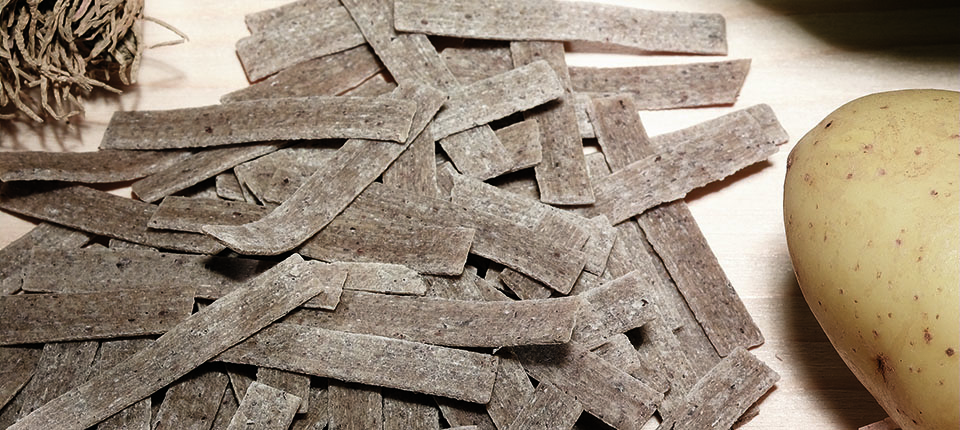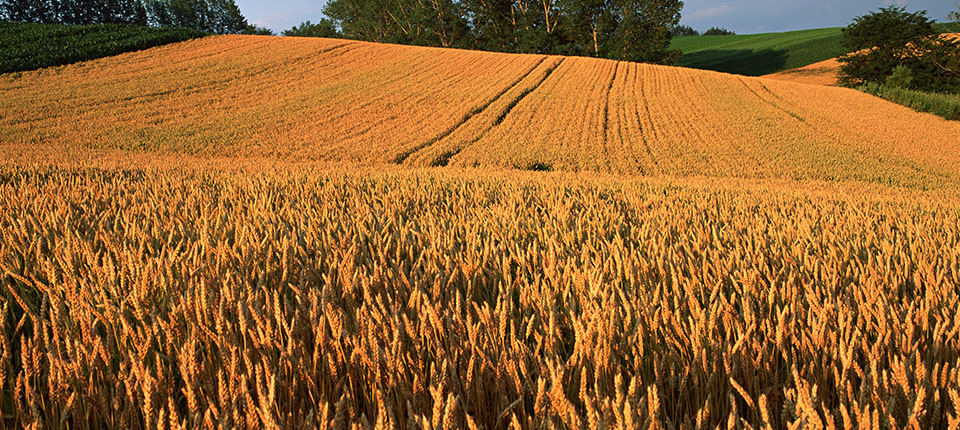A pack for all tastes
18 June 2012A journey through different types of packaging adopted to store different types of pasta: from the dry to the fresh product, from frozen to ready-to-eat meals
by Elena Consonni
To each pasta its own pack, this could be the motto to define the bond that links the pasta product to the packaging system. Depending on the type of pasta – and most of all its methods of storage and expected shelf-life ? the industry has different types of packaging available. This is a brief overview, depending on the types of product.
Dry pasta, between plastic and cellulose
Dry pasta is the most stable from the microbiological point of view, it is stored at ambient temperature and has a rather long shelf-life, which varies according to whether it is semolina pasta (almost the entire Italian production), egg pasta or filled pasta. According to the data provided by the Istituto Italiano Imballaggio, the two most common types of packaging for this product are flexible plastic film bag (51%) and thin cardboard box (40%). The remaining 9% consists of plastic film bags with self-supporting base (5.5%) and paper bags (making up only 3-5% of packaging systems used). Therefore two large families of packages are available: plastic on the one hand and cellulose on the other.
The former are made up of flexible film, single-layer or polylaminates. These ensure the best performances in terms of versatility, because they can be adapted to any product or size, ensuring packaging speed and a certain economy, which is certainly not an element to be ignored when operating on a large scale. In the context of flexible material, the simplest film is that made of polypropylene (PP), a molecule widely used owing to its properties: transparency, sealability, low permeability to water and high permeability to oxygen. Polypropylene ensures electrical isolation and is resistant to acids, oils and alcohol. To improve the performance of the film (for example, in case of more delicate products such as dry egg pasta or filled pasta) the polypropylene can be combined, or better still – to use the specific term – coupled, with layers of different material, such as polyethylene, polyethylene terephthalate, EVOH, polyamide, polyolefin, bi-oriented polypropylene.
As for the sizes for semolina pasta, 500 g or kilo pillow-bags are preferable, sealed on two sides in packs for domestic use, for retail outlets; while those for Horeca, may be as much as 10kg. For filled dry pasta (a market niche on the decline) or egg pasta or that with more handmade connotation, the bag with flat, self-supporting base is generally preferred, with clip at the top or sealed and with a thin cardboard header card. The sizes are usually smaller (250 g or 500 g).
In case of industrial productions, the film is printed, the more handcrafted bags have a self-adhesive label. In bags with thin cardboard header cards, the information is present on the header card. The bags often have systems to allow for re-closure of the bag once it is opened.
Then there are packs made of cellulose materials, with thin cardboard boxes dominating, in 500 g and 1 kilo sizes. The thin cardboard is usually white or grey, printed, with a basic weight of about 320-330 g/m2. In comparison with the flexible bag, the cardboard box provides greater mechanical protection from impact, but has the great limitation of concealing the contents. One possible solution is to provide the cardboard boxes with a shaped window made of transparent polypropylene, so that the product is visible.
The paper bag is mostly used (but to a very small extent as compared to the counterpart made of plastic film) for pasta meant for catering. However, there are some examples of pasta packed in paper, wrapped in sheets closed with self-adhesive labels. In these case, however, these are more marketing and communication operations, rather than productions on large scale. This type of packaging, with a retrò flavour, is strongly reminiscent of old times, when dry pasta was sold in bulk and packed by the retailer.
For the more delicate egg pasta like tagliatelle, thin cardboard trays enclosed contained in plastic film bags are generally used.
Whether it is film, or thin cardboard, the packaging is done automatically: the packaging machines (horizontal or vertical) are positioned at the end of the production line, after the dosing machines. The bag is heat-sealed in a “U” shape and the cardboard is folded and glued in the filling phase. Depending on the type of pasta and the productivity of the entire line, the packaging machines can ensure more or less high efficiency.
Fresh pasta: the reign of modified atmosphere
In comparison with the “giant” segment of dry pasta, that of fresh pasta is a “dwarf”, but only as regards numbers: between plain, filled, egg pasta and gnocchi the total, according to AIDEPI (Italian Confectionery and Pasta Industries Association) data, is approx. 144,000 tons (national production in 2010), against the 3,100,000 tons of dry pasta. The market is therefore relatively small but very interesting, in terms of the turnover trend as well as the challenges it offers the packaging industry.
Fresh pasta is a more delicate product ? not only from the microbiological point of view ? and requires storage at controlled temperature, for a longer or shorter period, but never comparable to that of the dry product.
The factors which influence the shelf-life of fresh pasta include, first of all, the growth of microorganisms such as moulds, yeasts and bacteria, favoured by a relatively high level of activity of water. The presence of oxygen is another critical factor, because this in turn accelerates the microbial proliferation, the oxidation reactions, the development of “off-flavours” and the loss of colour. Light also triggers oxidation reactions, causes loss of colour, production of undesirable aromas and the denaturing of substances of nutritional interest; the interruption of the cold chain leads to temperature differences which accelerate the microbial, chemical, enzymatic reactions. And last of all, the loss of moisture causes drying of the pasta surface and modifies the sensorial features.
The criticalities are therefore many, and the best solution to lengthen the storage time for as long as possible, without losing the organoleptic features and, most of all, food safety, is the modified atmosphere (MAP) or protective atmosphere. This technology involves the replacement of ordinary atmosphere present inside the pack with gaseous mixtures selected suitably according to the type of product. The oxygen, of fundamental importance for the growth of numerous species of microbes and in different degradative reactions, is thus removed. For fresh pasta it is permitted to use nitrogen and carbon dioxide in mixtures ranging from 30% N2 with 70% CO2, up to 100% of carbon dioxide. The design of the pack is also of fundamental importance because the head space (i.e. the space left “empty”, therefore occupied by protective atmosphere) must be proportionate to the quantity and type of product.
In the choice of materials ? obviously in this case it is only flexible or semi-rigid plastic film ? for packaging in MAP, materials with a very high protective barrier power must be preferred, to obstruct the passage of water vapour from inside the pack to the outside and oxygen from the atmosphere to the inside after the packaging operation. Depending on the barrier level desired, polylaminates consisting of polyethylene, polypropylene, polystyrene, Evoh can be used.
The packaging technique is also very important. There are two classes, in compensated vacuum and by progressive dilution. In compensated vacuum techniques, vacuum is first created in the packs which are only then filled with the selected gaseous mixture. The machines may be thermoforming machines ? if the pack consists of a thermoformed tray made from sufficiently thick plastic laminate, closed with flexible film ? or with vacuum chamber, if the packaging is done in flexible heat-sealed bags after the filling.
For filling, vertical or horizontal machines “form-fill-seal” machines (which allow “U” sealing of the film fed by means of a reel in the packaging system itself), modified to allow introduction of atmosphere by means of “gas flushing”, are used. A feed nozzle enters the tube formed by the film which unwinds from the reel and lets in the atmosphere selected thus replacing the air present. The second system however is less effective than the first because it does not ensure complete elimination of oxygen.
Another enemy of fresh pasta, as we have seen, is light. At the theoretical level, the ideal choice would be to use a opaque film. Unfortunately this is not possible, not so much owing to technological hindrances as to the marketing reasons. It is of fundamental importance for the consumer to see the product before buying it, a phenomenon those dealing with packaging cannot ignore. One solution that can be put into practice – and effectively adopted – is to print most part of the package in such a way as to offer the maximum possible barrier against light, while however leaving the possibility of seeing the product.
The new lines of research
In view of the high application interest (in addition to fresh pasta there are many sectors in which modified atmosphere is used, generally characterized by high added value), a lot of energy is being dedicated to the research and development of film which can be used for this type of packaging in modified atmosphere.
The latest lines of research mainly focus on the aspect of sustainability and aim at reducing the thicknesses of materials, without affecting the performance. One choice taken into consideration is that of using coatings: coatings with micrometric thickness with very high barrier properties which make it possible to reduce the quantity of base film (generally polyethylene or polypropylene). Another very promising choice is that of nanotechnology, the development of which is however limited by the fact that the new nanomaterials meant to come in contact with the food products must be authorized by the EFSA (European Food Safety Authority), a rather long process, before they can be released on the market .
Among the studies currently under way it is worthwhile mentioning those being conducted by the research team of the Department of Chemistry of the Università Federico II of Naples, in the context of the Progetto Axía, financed by Nestlé. Among the lines of research the group is handling, that in the most advanced phase concerns the development of film containing polyethylene and cyclic olefin copolymers, the efficiency of which in packaging of fresh pasta in modified atmosphere is being tested.


